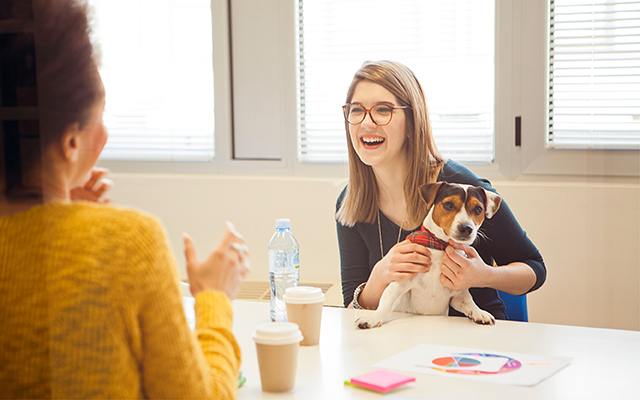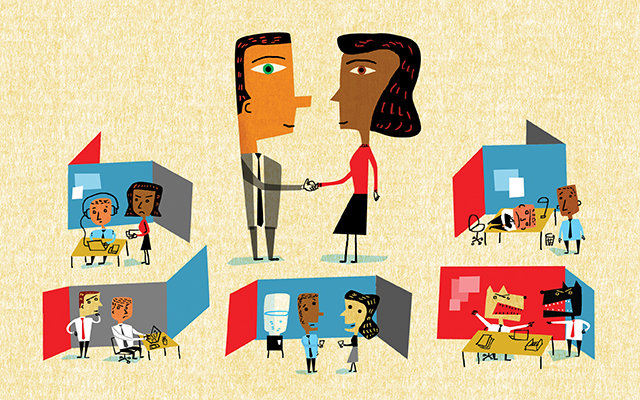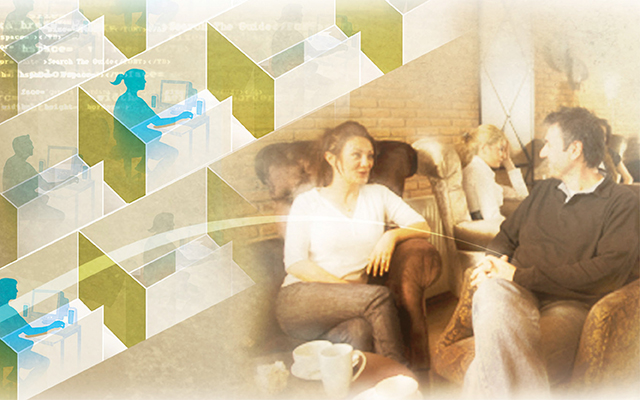The workplace doesn’t have to be a dog-eat-dog world, a new study finds.
Many studies have shown that pets improve their individual owner’s quality of life and health by providing companionship and support, and by even helping them meet new people and create friendships.
But can a pup affect group dynamics?
To test how dogs might foster cooperation and trust between humans, Central Michigan University researchers conducted three different studies.
In the first study, 120 people were divided into four-person groups and tasked with generating a 15-second advertisement and slogan for a fictional product. Half the groups had a dog present, and half did not.
According to researchers, participants in the dog-present group displayed greater verbal cohesion (speaking in a more positive and friendly manner), physical intimacy (more eye contact, leaning in to speak, and more touching), and cooperation.
In the second study, the 120 people were again divided into four-person groups and were asked to play a game in which they could choose to cooperate or not with their fellow players.
Those in the dog-present group again displayed more verbal cohesion and physical intimacy and gave higher ratings of trustworthiness to fellow group members.
In the final study, 150 new participants were shown 40-second video clips — cropped to hide the presence of a dog — of the groups in the first study and were asked to assess group interaction based on six indicators related to positive emotion. Behavior in the dog-present groups was rated as more cooperative, friendly, enthusiastic, active, and attentive.
“Overall, the findings of these studies provide evidence that companion dogs can improve prosocial behavior in work groups,” the study authors note. “Additional studies could provide a fuller understanding of the causal mechanisms by which dogs influence prosocial behavior. Practically, our results suggest that organizations may benefit by allowing our furry friends to come to work.”
Don’t have access to an office dog? There are still things you can do to improve your well-being during your workday. Here are a few ideas gleaned from past Experience Life articles:
Mix it up! Sit, stand, and move around, changing your work position at least every 20 minutes. And think NEAT — nonexercise activity thermogenesis, a term coined by obesity researcher James Levine, MD, PhD, for all the incidental movement you do throughout the day that isn’t formal exercise. NEAT is also code for “get out of your chair and walk around as often as possible,” he says.
Ask for an office with a window and natural lighting. Two recent studies — one from Northwest University, the other from the University of Illinois at Urbana-Champaign’s School of Architecture — show that daylight helps you work better and feel healthier, as well as sleep better at night. And both found that natural light improved people’s overall well-being. But with the open layout dominating most offices, this is a rarity. So, get a desk lamp with a warm white bulb to balance out the overhead fluorescent lighting’s brilliance.
Ride your bike to work. Commuters who bike to work are the happiest — and have the highest sense of overall well-being — compared with those who drive cars or use public transportation, according to a Portland State University study.




This Post Has 0 Comments